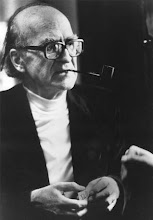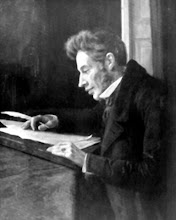As I approach this question it appears to me that two major social contexts are being contested within scope of this problem, namely that of power and identity. Certainly the social conflicts are broad between cultures in a global environment and as we enter a pluralistic or multicultural setting, boundaries defined by proximity have become tighter or of little consequence. With temporal and spatial division shrinking, soon, it would seem, we may have to stop thinking of ourselves as a multicultural environment and more as one multiethnic culture. In order to survive within this context, issues of identity and power must be defined and addressed in the hopes that common ground may be found on which to live.
Power
One could argue that the world is still languishing under the effects of colonialism, the product of the first worldwide capitalist endeavor, in that the old colonial powers still have much of the global wealth. Voices and faces, previously caricatured, imposed, and invented, are emerging to speak for themselves. The traditional centers of ‘Western’ or colonial power are becoming decentered or postcolonial. As technological advances in the transmission of ideas and transportation increase, the world seems smaller in that it now longer takes days to travel distances it now takes hours to cross. Ideas, once taking months to circulate via the printing press now take seconds via the Internet. Space and time are now of small consequence.
Still hegemony exists in the form of capitalist interests, no longer only for the colonial powers but also a possibility for territories that once were occupied by these colonial powers. By offering the Western idea of success many former colonies see the possibility of wealth and education for themselves as a viable reality. This ideological control can even be seen in the idea of tolerance, which carries with it the notion of a position of power that deigns to grant clemency out of magnanimity rather than acceptance out of graciousness as a coequal. One problem seems to be that hegemony no longer is working and control, as recent events demonstrate, must be re-exerted by means of arms. The western ideals of life, liberty, and the pursuit of the ubiquitous Big Mac no longer offer the same allure for those former colonies. Why not?
Identity
Although I do not accept all the finer points of Mary Douglas’ system of understanding social pressures, I do find her model of Grid/Group useful in describing and understanding the social conditions in which we find ourselves [1, p. 60]:

Within this system we can see that we have an increasingly privatized system of classification with the construction of democracy and the and an increasing amount of group as the world gets smaller and we are confronted other people’s beliefs as well as social pressures of style, consumerism, and whatnot. Those that identify with this egalitarian worldview fit in and feel accepted. Those that do not are marginalized and isolated from the culture. These isolates are
unpredictable in that their voice is not heard within the context of the prevalent culture. These isolates are not necessarily counter-cultural, they are just unheard, invisible, and unpredictable. This environment of isolation, I believe, allows for the formation of views that
within the prevailing social context seem counter-cultural and extremist. Here is the pool of persons waiting to be exploited as human bombs in terrorism as well as any other counter-cultural activity whether violent or not.
We are, of course, speaking in broad sweeping generalities with this or any other model but I believe that it does allow a means for study. The question now becomes what happens when different cultures compete for the same space? Or even, what happens when a new idea or personality is introduced into the grid/group ratio of a given culture?
Adversarial Mode
When different or competing cultures or systems of beliefs encounter on another, a mad scramble for power ensues, often in the form of what Bourdieu [2] would describe as ‘cultural capital’ or perhaps those items that constitute each culture’s idea of the moral high ground. This perception of risk or threat often gets focused into political and religious sayings such as “God is on our side” or “Don’t tread on me!” This heightened sense of defense allows for a period of justification, accusation and social galvanization against the other culture. This can also happen within the same culture with the introduction of a new idea into a socially charged environment ready for its acceptance to create division and social revolution.
We can certainly see this at work in the broad reformations that swept Western Europe in the sixteenth-century. The competing factions will feel threatened, defensive, and will justify acts that may not have been thinkable earlier in the name of religion or politics. This is also the context for war in an egalitarian society such as the West. Because our values, interests, and worldview are threatened, aggression can be justified even when dialogue could be able to solve matters. Liberal views, hitherto seen as socially progressive, are criticized as idealistic and weak. Conservative viewpoints, hitherto criticized as narrow-minded and mean, can be seen as practical and necessary.
Conclusion
So can powerful beliefs and tolerance coexist? I believe that they can if they exist outside of an adversarial mode under the aegis of commonality. In a religious context, I am not speaking necessarily of ecumenism or as Westhelle describes as a
depositum fidei in which an imaginary cathedral works to store and display all “proofs of faith" [3, p. 7]. And politically, I am not speaking of a ‘one-world government’, of which the mere thought would inspire revolutions, both political and religious, the world over. So how do we do we provide an environment where all beliefs and cultures can coexist, perhaps even peaceably?
I believe that we have to address the notion of power to include gracious acceptance in coequal terms. A universal ‘live and let live’ must be adopted and practiced by all cultures in this increasingly shrinking world, in which all inhabitants can practice systems of belief without infringing or being infringed on by others. Within a given culture the social isolates must be given the opportunity to express their voices if they so chose. The problem is that this is practically untenable. As borders constrict conflict arises until one cultural identity is fashioned.
I suppose the only answer to this question is yes it can but not until everyone’s powerful beliefs include the notion that every person has the right to hold divergent positions and ideas. This position of difference cannot be perceived as threatening or conflict, war, and terrorism will always exist. The Catholic and Protestant institutions that battled within the reformations have made a quiet peace with only minor hostilities in the form of bigotry from the extreme fundamentalists in each camp. Each has its own identity and each respects the differences in the other. With Vatican II the Catholic Church even made major overtures toward a lasting, peaceful respect. Perhaps the rest of the competing cultures can do the same.
-Safari Bob
References
[1] Douglas, M. (1996).
Natural Symbols. New York: Routledge.
[2] Bourdieu, P. (1998).
The State of Nobility. Lauretta C. Clough (trans.). Cambridge, UK: Polity Press.
[3] Westhelle, V. (2003). “Multiculturalism, Postcolonialism, and The Apocalyptic” in
Theology and The Religious: a Dialogue, Viggo Mortensen (ed.). Grand Rapids, Michigan: Eerdmans, pp. 3-14.
 Central to the purpose of this book is the notion that the identities of Indian religious objects are not fixed or permanent but constructed and reconstructed by the religious, cultural, economic, and political circumstances in which they are found. Davis approaches this idea by adapting the reader-response theory of ‘interpretive communities’ into his notion of ‘communities of response’ in which one may consider “the plurality of ways viewers approach and encounter a visual object" [1, p. 9]. The location, presentation, and environment in which an object is encountered constitute a “frame” that guides the responses of a viewer in looking at and acting toward the object. The viewer also brings a second frame or “dispensation”, i.e. her own socially shared assumptions, ideas, needs, experiences, and hopes, to this encounter. This interaction between the icon and the viewer creates a series of responses or “reinterpretations” over time in which these objects may be animated as much by these encounters as by the deities they represent and support. By going beyond material creation, Davis argues for “an expanded frame for viewing Indian religious objects, one that accepts contingency, instability, and plurality in the identities of images" [1, p. 263]. This focus on the moment of creation restricts the meaningful possibilities of an object and distracts from the participation of the object in the ongoing social life of its communities.
Central to the purpose of this book is the notion that the identities of Indian religious objects are not fixed or permanent but constructed and reconstructed by the religious, cultural, economic, and political circumstances in which they are found. Davis approaches this idea by adapting the reader-response theory of ‘interpretive communities’ into his notion of ‘communities of response’ in which one may consider “the plurality of ways viewers approach and encounter a visual object" [1, p. 9]. The location, presentation, and environment in which an object is encountered constitute a “frame” that guides the responses of a viewer in looking at and acting toward the object. The viewer also brings a second frame or “dispensation”, i.e. her own socially shared assumptions, ideas, needs, experiences, and hopes, to this encounter. This interaction between the icon and the viewer creates a series of responses or “reinterpretations” over time in which these objects may be animated as much by these encounters as by the deities they represent and support. By going beyond material creation, Davis argues for “an expanded frame for viewing Indian religious objects, one that accepts contingency, instability, and plurality in the identities of images" [1, p. 263]. This focus on the moment of creation restricts the meaningful possibilities of an object and distracts from the participation of the object in the ongoing social life of its communities.









